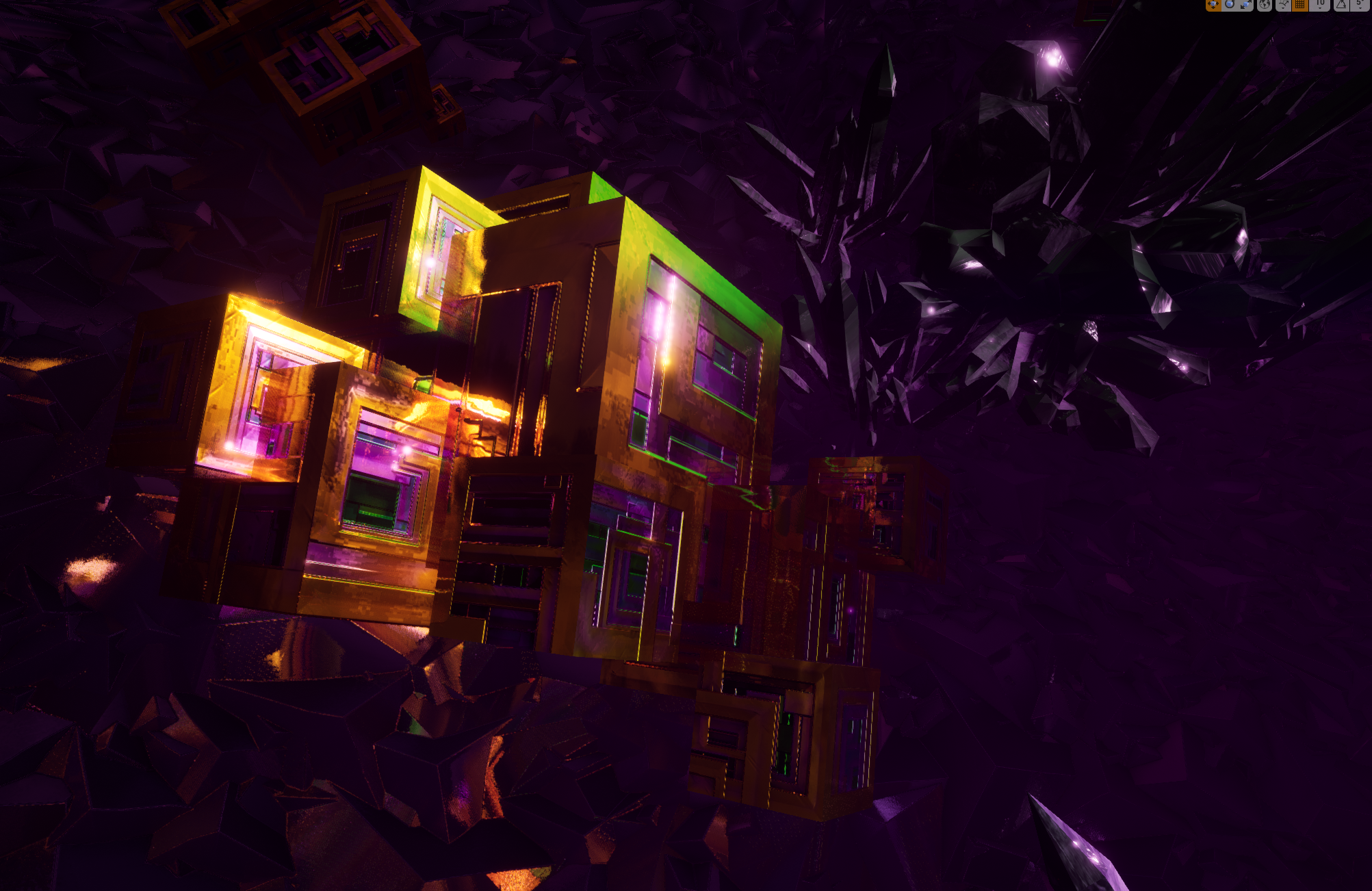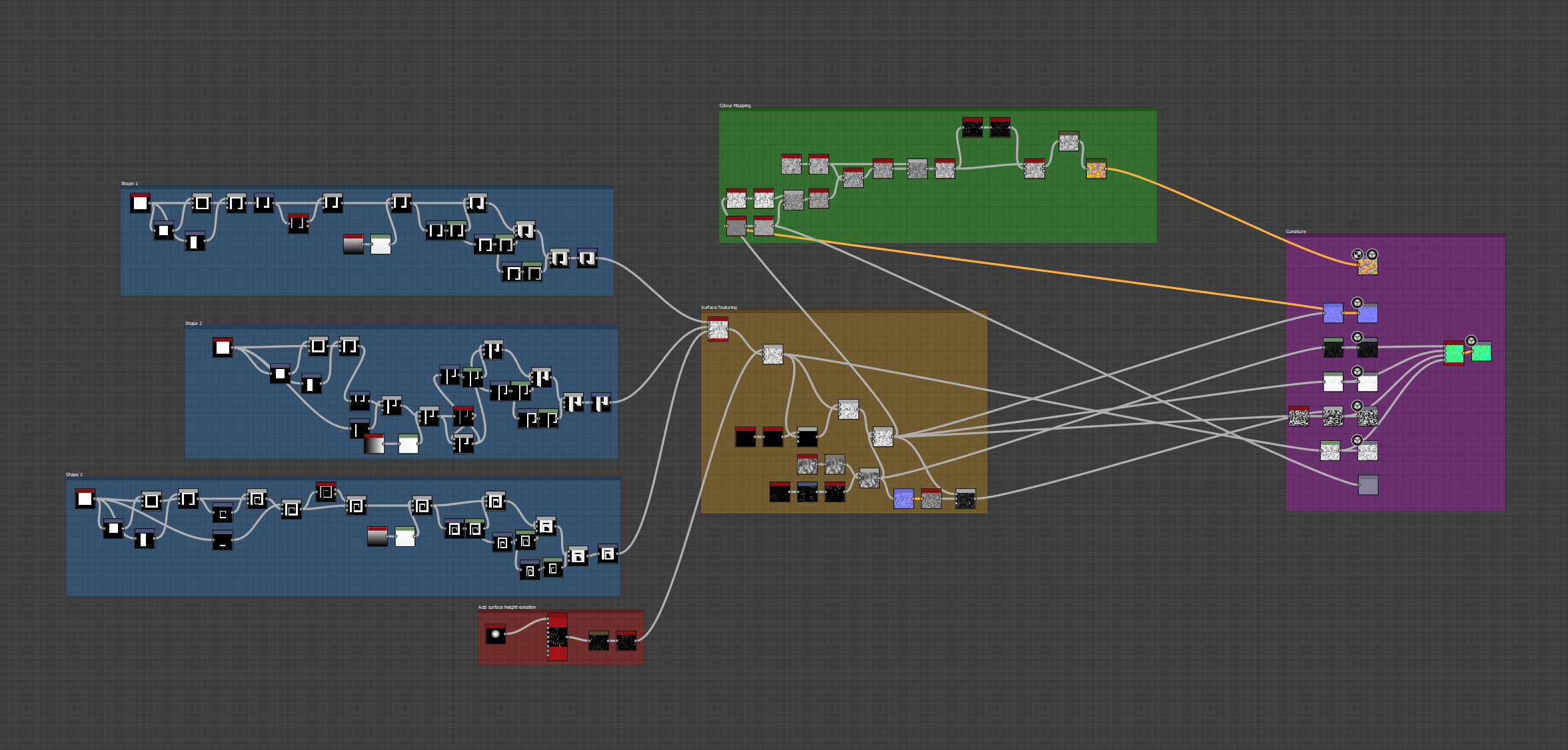Alien Water Blended Material
The premise for this material was “Alien water with very high crystal saturation”
In order to create a water material that works with procedurally-generated terrain, we can’t manually paint any coastline information.
To get around this, we use the Vertex Colour data of the underlying terrain to control blending between the base colour of the material and the colour of the surrounding terrain.
In order to get the apparent depth effect, we use Bump Offset to create a parallax effect that moves a depth texture slower than the surface.
The normals are created by combining two panning textures, which move opposite the surface specks designed to look like a crystalline shell floating on the surface.
Short loop of the water material in-situ.

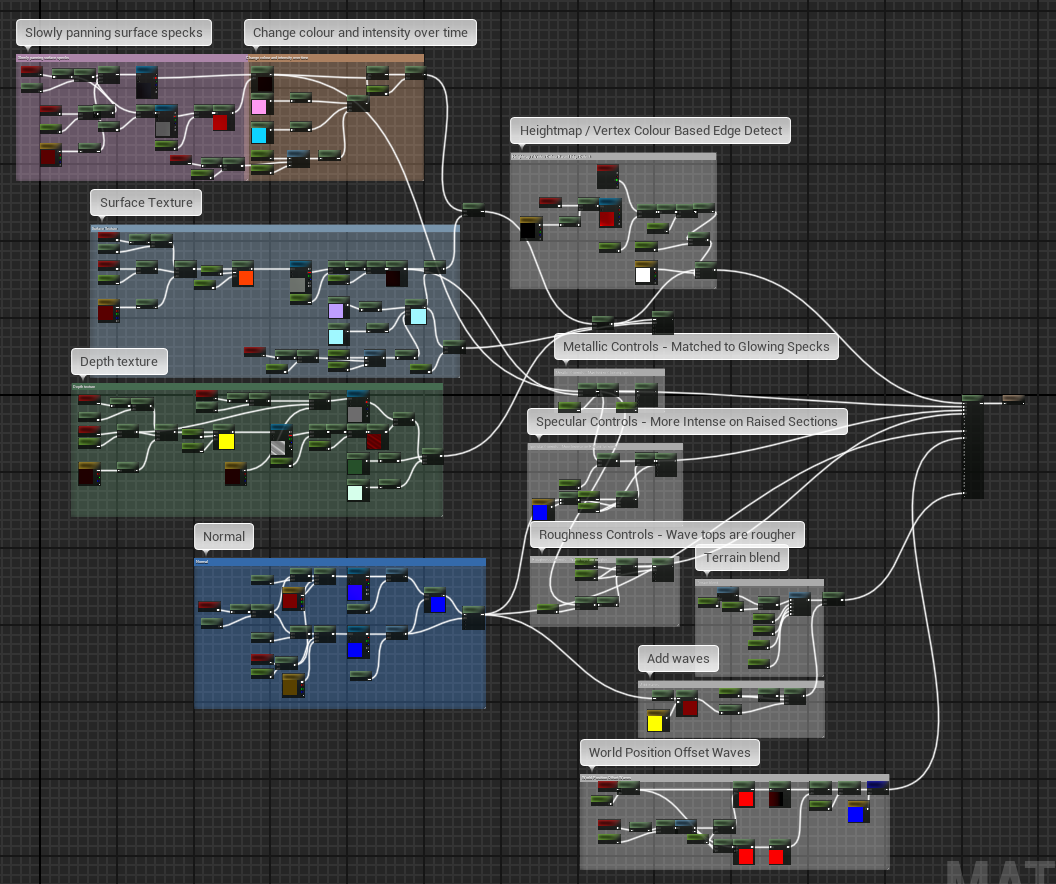
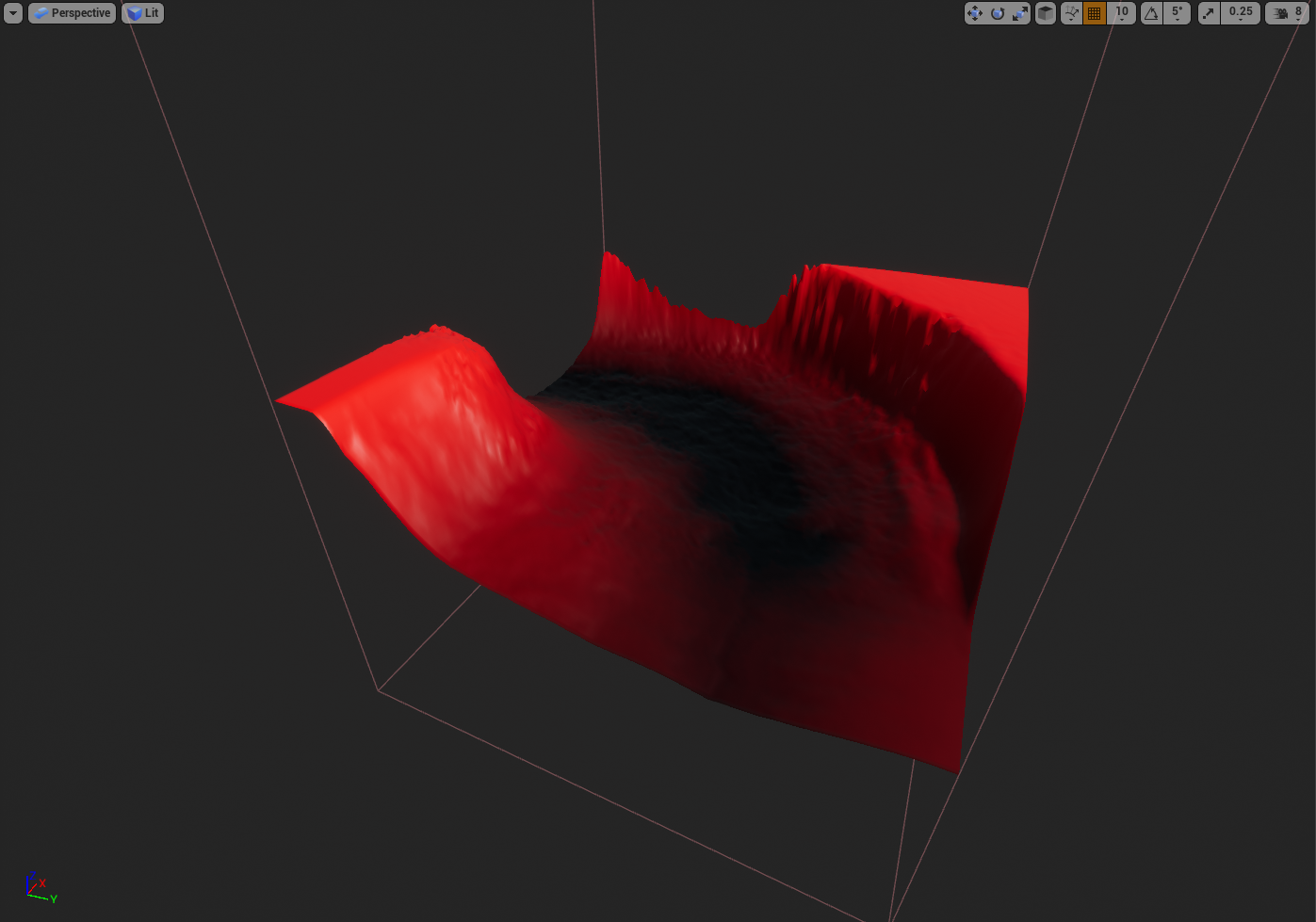


Sand Dune Material
Wavy Sand material made in Substance Designer
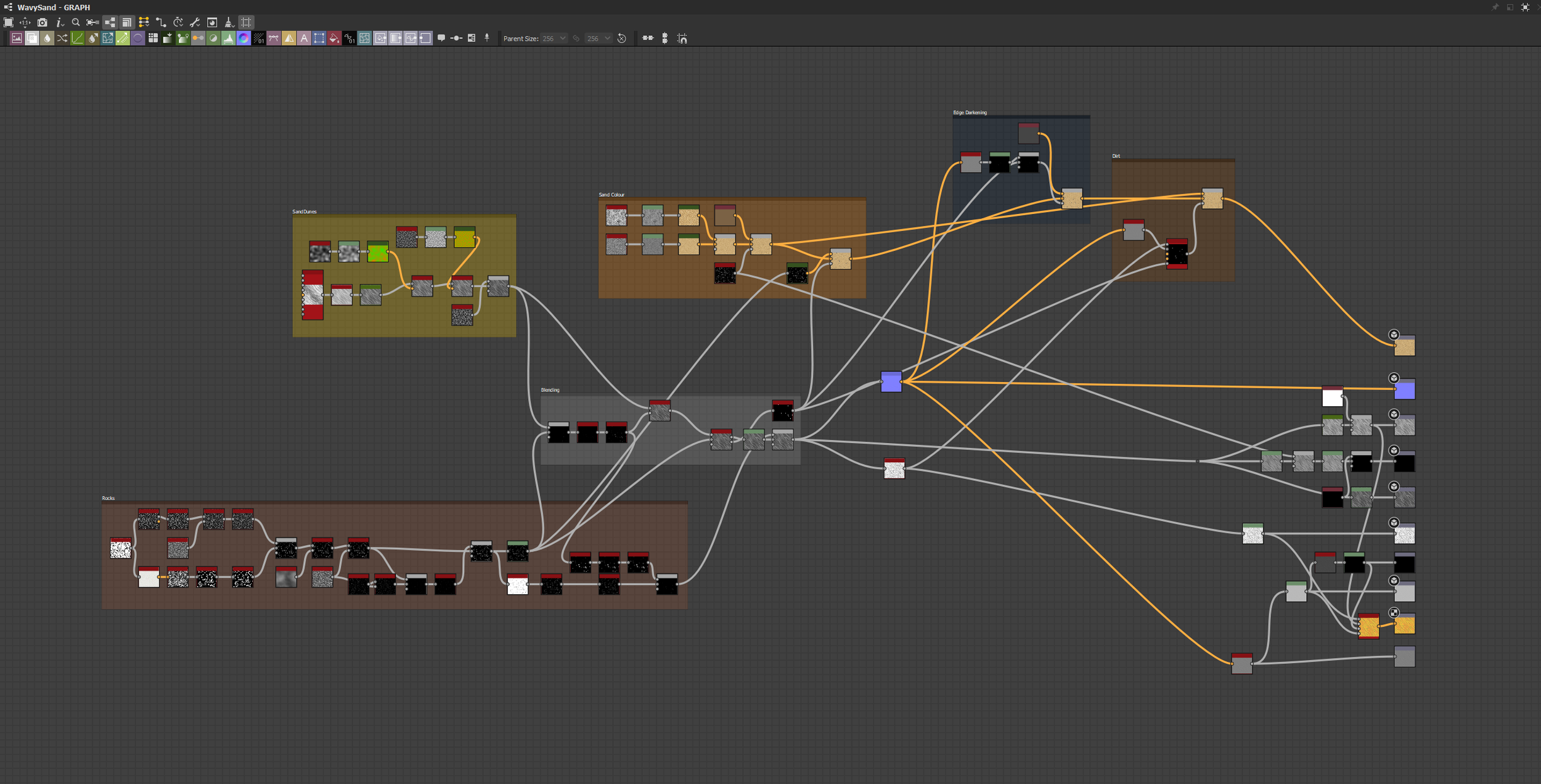


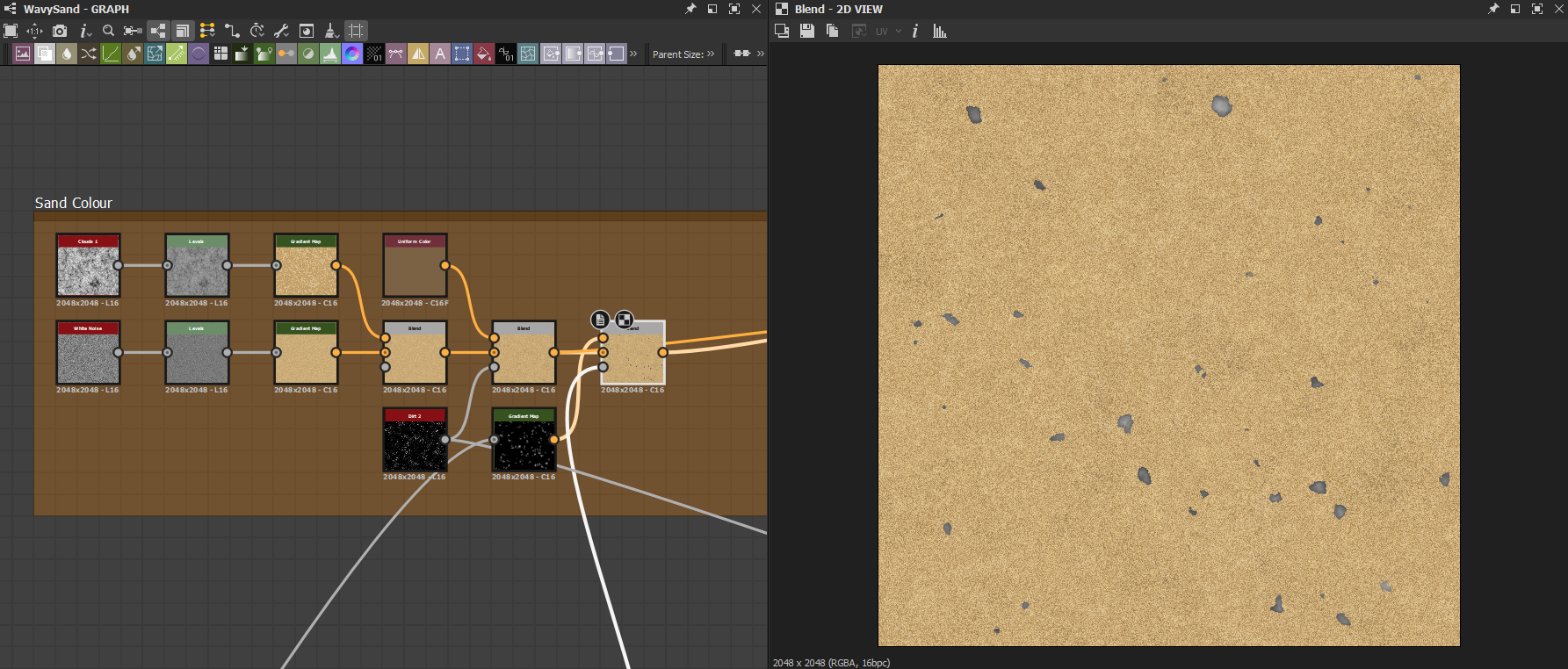

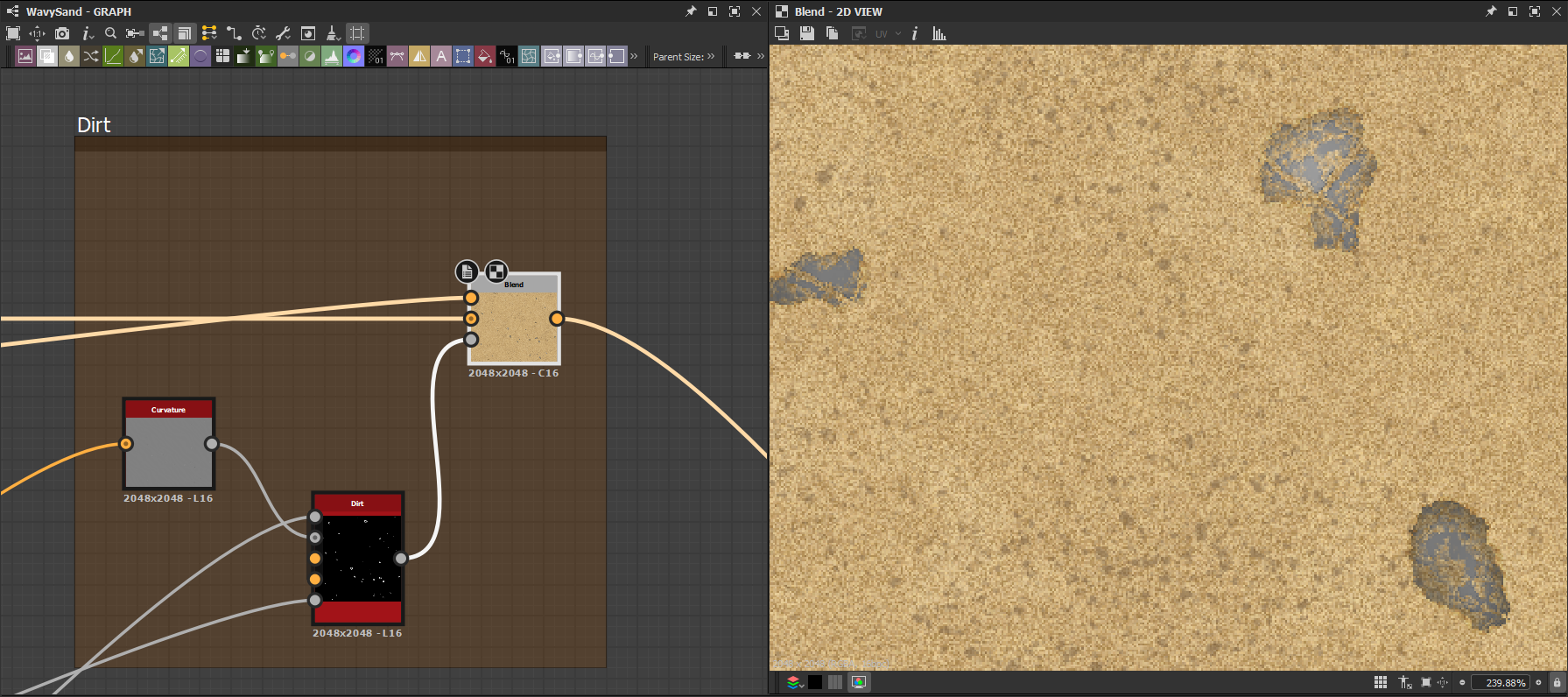
Material Breakdown:
Firstly the shape of the sand dunes are made by warping some linear shapes with two levels of Gaussian noise to get the undulating curved shape.
Secondly the pebbles are created using a cells noise broken up using Flood fill and Histogram Scan to select specific shapes. We then add detail to these rock shapes by applying slope blur to roughen and bevel the edges. Then we add scratches to add some variation to the surface.
Thirdly we blend the two maps using a Height Blend node to set the stones in the sand. This also gives us a handy mask to use for colour masking.
The colour is obtained by a low and high frequency noise to give both the macro colour variation and individual sand grain variation, then blending in some darker patches for further variation. The gradient map was selected from a reference picture. The rocks are then blended into the sand base using the aforementioned colour mask we got from the Height Blend node.
We then use a curvature mask to selectively darken the edges of the rocks, and to add sand back into some of the crevices in the rock.
Bismuth Crystal Material


